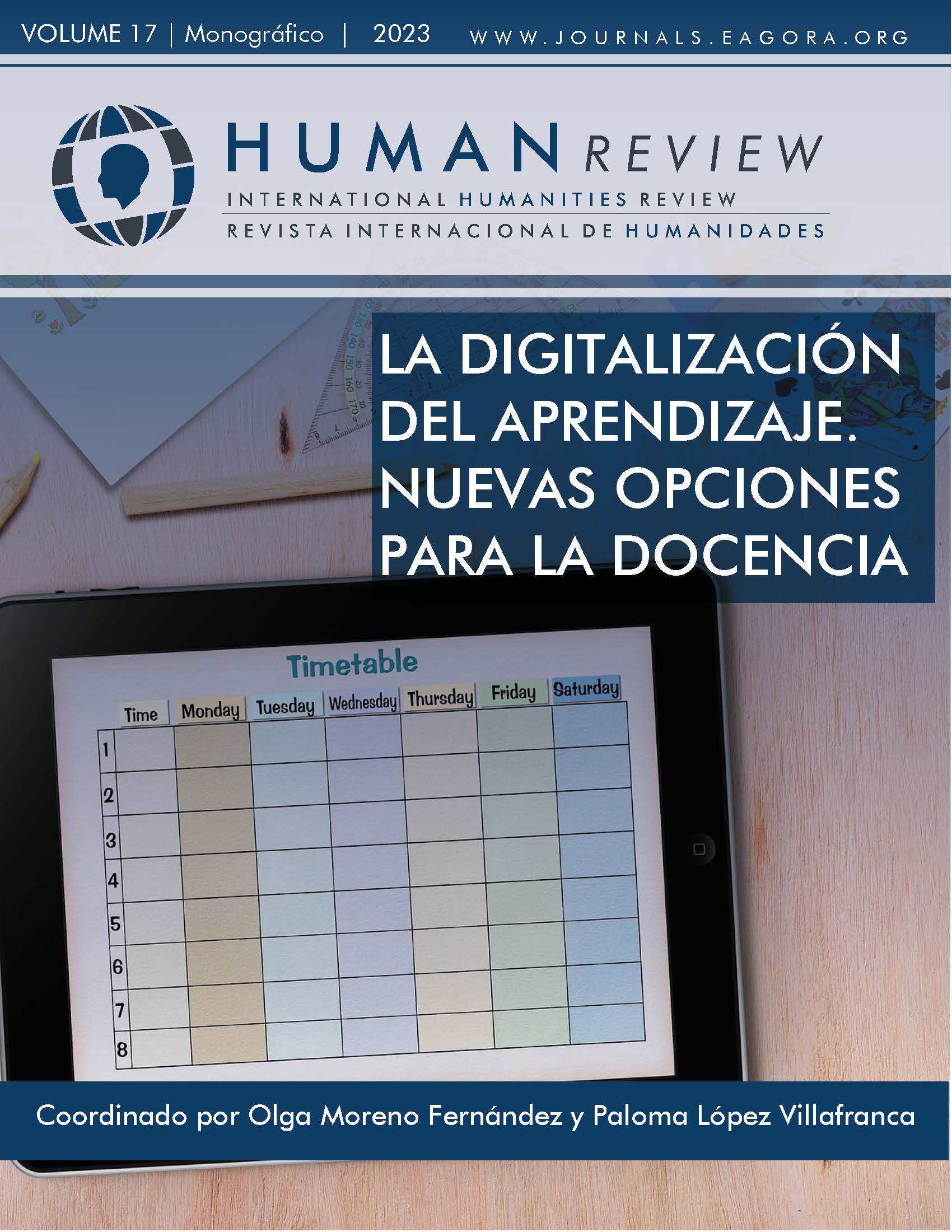Digital Literature as a resource for reading comprehension development
Examples of transposition
Keywords:
Digital Literature, Transposition, Micro Skills, Motivation, Interaction, Multimediality, GamificationAbstract
Digital literature can become an interesting tool to arouse interest in literary texts among students of Secondary, Baccalaureate and Vocational Training. This article analyses some characteristics of electronic literature that make it attractive to digital natives and that can be of great help in developing reading comprehension skills. Several examples are presented that constitute transpositions of canonical works. This fact favours that they can be used in the classroom as an entrance to the original works. At the end, we suggest the possibility of developing a teaching practice based on the concept of transposition and rewriting for future courses.
References
Albarello, F. (2011). Leer/navegar en internet: las formas de lectura en la computadora. La crujía
Barzillai,M., Thomson J. y Mangen A. (2020). The impact of e-books on language and literacy, en: K. Sheehy y A. Holliman (ed.), Education and new technologies: Perils and promises for learners. Routledge, 33–47.
Bolter J.D., Grusin R. (2000), Remediation: Understanding New Media. MIT Press.
Chartier, R. (1995). Forms and Meanings: Texts, Performances, and Audiences from Codex to Computer. University of Pennsylvania Press.
Cassany, D., Luna M., San G. (2001). Enseñar lengua. Graó.
Cavallo, G., Chartier, R. (1998), Historia de la lectura en el mundo occidental. Taurus.
Cuquerella Jiménez-Díaz, A. (2020). La inteligencia artificial en las creaciones artísticas digitales: ¿hacia una cuarta generación de literatura electrónica? en: L. Trujillo, J.R. Islas. Humanidades digitales en contexto. McGrawHill, 59-70.
Cuquerella, A. (2028). Del café al tuit. Literatura digital, una nueva vanguardia. Calambur.
Delgado, P., Vargas, C., Ackerman, R., & Salmerón, L. (2018). Don’t throw away your printed books: A meta-analysis on the effects of reading media on comprehension. Educational Research Review, 23-38.
Díaz Borque, J.M. (1985). De la tradición oral a la cultura impresa. Novagráfik.
Flores, Leonardo (2019). Third Generation Electronic Literature. Electronic Book Review, April 7. https://doi.org/10.7273/axyj-3574.
Glister, P. (1997). Digital Literacy. Wiley Computer Pub.
Goicoechea, M. (Ed.) (2013). Alicia a través de la pantalla. Lecturas literarias en el siglo XXI. CITA/Fundación Germán Sánchez Ruipérez.
Hayles, K. (2007). Electronic Literature: What is it. En C. Cromton, R.J. Lane y R. Siemens (Eds.). Doing Digital Humanities. Practice, Trainin, Research (pp. 197-226). Routeledge.
Pérez y Pérez, R. (2018). Introducción a la creatividad computacional: el caso del proyecto MEXICA-impro. En: I. Galina, M. Peña, E. Priani, J.F. Barrón, D. Domínguez y A. Álvarez (Coord.) Humanidades Digitales: Lengua, texto, patrimonio, datos. Bonilla Artigas Editores, 75-110.
Sanz Cabrerizo, A. (2009). Otras e-lecturas son posibles. Texto digital, vol. 5(2), 92-111. https://doi.org/10.5007/1807-9288.2009v5n2p92
Z. Takacs, E. Swart y A. Bus, 2015. Benefits and pitfalls of multimedia and interactive features in technology-enhanced storybooks: A metaanalysis. Review of Educational Research, vol. 85, 4, 698–739.
Downloads
Published
Issue
Section
License
All articles are published under an Attribution-NoDerivatives 4.0 International (CC BY-ND 4.0) license. Authors retain copyright over their work.

